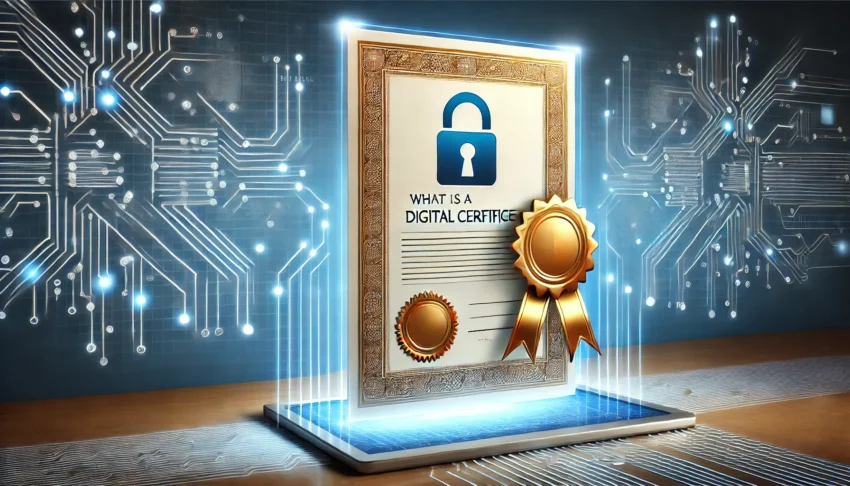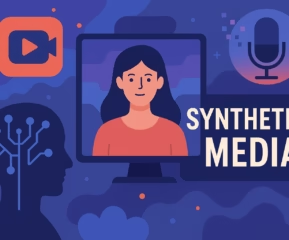Digital certificates have become the invisible backbone of internet security, protecting billions of online transactions and communications every day. Understanding these essential security tools can help you make informed decisions about your online safety and business operations.
Understanding Digital Certificates
Digital certificates, also known as public key certificates, allow individuals, organizations, and even devices to establish trust in the digital world. Think of a digital certificate as an electronic identification card that proves the authenticity of a website, application, or device on the internet.
At its core, a digital certificate contains crucial information including a public key, identifying details about the certificate holder, and a digital signature from a trusted Certificate Authority (CA). This combination creates a secure foundation for encrypted communications and verified identity across the web.
How Digital Certificates Actually Work?
When a user tries to connect to a server, the server sends them its TLS/SSL certificate. The user then verifies the server’s certificate using CA certificates that are present on the user’s device to establish a secure and safe connection.
TLS uses public-key cryptography to verify the authenticity of a website. Every website that uses HTTPS (TLS) generates a mathematically related key pair: A private key, which is kept secret and used to sign data · A public key, which anyone can use to verify that data
This process happens automatically in seconds, creating a secure encrypted tunnel between your browser and the website you’re visiting. The green padlock icon you see in your browser indicates a valid digital certificate is protecting your connection.
X.509 Standard: The Foundation of Digital Certificates
X.509 is a standard format for public key certificates. Each X.509 certificate includes a public key, identifying information, and a digital signature. This international standard defines the format and structure that most digital certificates follow.
X.509 digital certificate is a standardized format for encoding and exchanging public key certificates. These certificates are used in various security protocols and applications to verify the identity of individuals, devices, or entities in a digital communication or transaction.
The X.509 format ensures compatibility across different systems and applications, making it possible for devices from various manufacturers to communicate securely using the same certificate standards.
Types of Digital Certificates and Their Applications
Digital certificates serve multiple purposes across different scenarios:
SSL/TLS Certificates
They protect websites and web applications. Most websites that conduct business on the internet require a digital TLS/SSL certificate to encrypt and secure private data that is transmitted. These certificates enable HTTPS connections and protect sensitive information like login credentials and payment details.
Code Signing Certificates
They verify software authenticity. Developers use these certificates to digitally sign applications, ensuring users can trust that software hasn’t been tampered with during download or installation.
Email Certificates
They secure email communications through encryption and digital signatures. These certificates enable secure email transmission and verify sender identity.
Document Signing Certificates
They allow users to digitally sign important documents. X.509 digital certificates enable users to digitally sign the documents they create (Word docs, PDFs, etc.). What this does it allow the document creator to prove that they created the document and that it hasn’t been altered or modified in any way.
Certificate Authorities: The Trust Network
Certificate Authorities act as trusted third parties that issue and validate digital certificates. These organizations follow strict security protocols and undergo regular audits to maintain their trusted status. Major browsers and operating systems include root certificates from recognized CAs, creating a web of trust that enables secure communications worldwide.
Popular Certificate Authorities include DigiCert, Let’s Encrypt, Sectigo, and Entrust. Each CA offers different validation levels, from basic domain validation to extended validation that requires extensive identity verification.
Security Features and Benefits
The TLS protocol aims primarily to provide security, including privacy (confidentiality), integrity, and authenticity through the use of cryptography, such as the use of certificates, between two or more communicating computer applications.
Digital certificates provide three fundamental security benefits:
Authentication verifies that you’re communicating with the legitimate entity, not an imposter. This prevents man-in-the-middle attacks where criminals intercept communications.
Encryption protects data transmission through mathematical algorithms that make intercepted information unreadable to unauthorized parties. Modern certificates support strong encryption standards that would take centuries to break with current technology.
Data Integrity ensures information hasn’t been altered during transmission. Digital signatures within certificates can detect even minor changes to transmitted data.
Certificate Management and Lifecycle
Digital certificates have specific lifespans and require proper management. Apple revealed to the CA/Browser Forum that it had posted a draft ballot for comment on GitHub regarding two important SSL/TLS certificate lifetime events: Gradually reduce the maximum duration of public SSL/TLS certificates to 45 days by 2027
This trend toward shorter certificate lifespans improves security by reducing the window of vulnerability if a certificate becomes compromised. Organizations must implement proper certificate management systems to handle renewals and prevent service disruptions.
Real-World Impact on Your Online Experience
Digital certificates affect every aspect of your online activity. When you shop online, access your bank account, or send sensitive emails, digital certificates work behind the scenes to protect your information. Without these certificates, the internet would be vulnerable to widespread surveillance and fraud.
Modern browsers display security warnings when encountering websites without proper certificates, helping users avoid potentially dangerous sites. This protection has become so fundamental that many browsers now mark HTTP sites as “not secure” to encourage adoption of certificate-protected HTTPS connections.
Choosing the Right Digital Certificate
Selecting appropriate digital certificates depends on your specific needs. Small websites might benefit from free certificates offered by Let’s Encrypt, while large enterprises often require extended validation certificates that display company names in browser address bars.
Consider factors like validation level, warranty coverage, customer support, and compatibility with your existing systems. The investment in proper digital certificates pays for itself through improved security, customer trust, and compliance with modern web standards.
Digital certificates represent a critical investment in your online security infrastructure. As cyber threats continue to evolve, these certificates provide essential protection that keeps your digital communications safe and trustworthy.
- What Synthetic Media Is and How It’s Transforming Digital Content? - November 4, 2025
- What is a Personal Digital Assistant? - September 6, 2025
- What is a Digital Audio Workstation? - September 3, 2025


